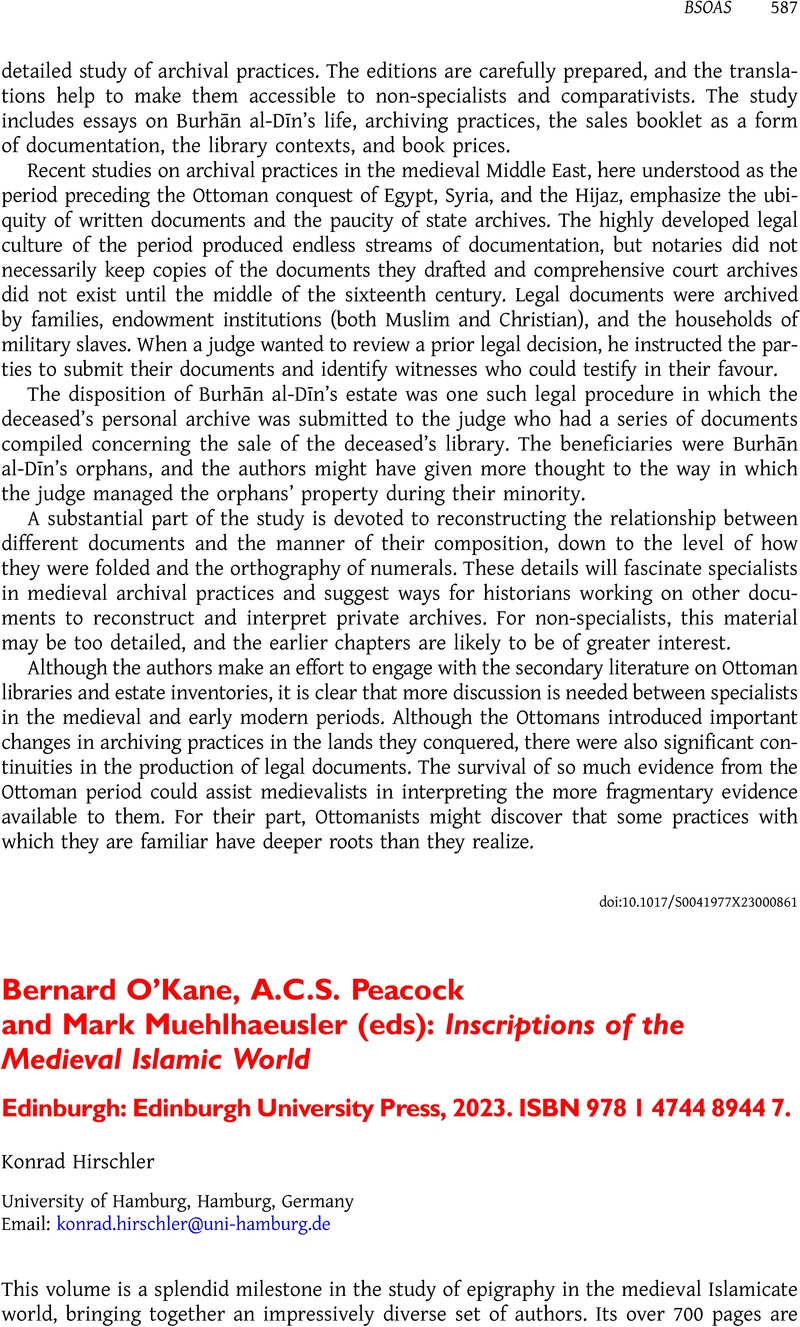No CrossRef data available.
Article contents
Bernard O'Kane, A.C.S. Peacock and Mark Muehlhaeusler (eds): Inscriptions of the Medieval Islamic World Edinburgh: Edinburgh University Press, 2023. ISBN 978 1 4744 8944 7.
Review products
Bernard O'Kane, A.C.S. Peacock and Mark Muehlhaeusler (eds): Inscriptions of the Medieval Islamic World Edinburgh: Edinburgh University Press, 2023. ISBN 978 1 4744 8944 7.
Published online by Cambridge University Press: 12 December 2023
Abstract
An abstract is not available for this content so a preview has been provided. Please use the Get access link above for information on how to access this content.

- Type
- Reviews
- Information
- Copyright
- Copyright © The Author(s), 2023. Published by Cambridge University Press on behalf of SOAS University of London



